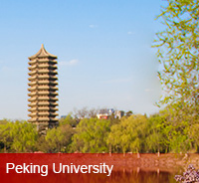Prof. Justin Yifu Lin Debunks Pessimistic Views on Chinese Economy
Feb 01-2024
Despite China’s accomplishments since its launch of reform and opening-up, pessimistic views on the Chinese economy – typified by the so-called ‘the theory of China Collapse’ – have persisted. A weaker-than-expected recovery after the pandemic has again fed such views. In the last lesson of his course Topics of Chinese Economy at Peking University, Prof. Justin Yifu Lin debunked the views by laying bare their factual and logical fallacies. He is Honorary Dean of NSD and Dean of PKU Institute of New Structure Economics.
One such view holds that the continuous decrease in economic growth since 2013 can be attributed to an expanding presence of state-owned enterprises, which has led to a shrinking private sector. Prof. Lin pointed out that such a view confounds cause and effect. In fact, the growing proportion of SOES has come about largely because some private firms have had difficulties exporting as developed countries have never really recovered from the 2008 Financial Crisis. Facing uncertain prospects, private firms have showed a lack of investment intention. To stabilize the economy and employment situations, the government has made counter-cyclical investments and implemented proactive fiscal policies. A case in point is infrastructure construction, which relies on SOE investment as private firms lack either intention or capacity.
An aging population is also often believed to be a harbinger of economic decline, but Prof. Lin cited the examples of many countries that get old before getting rich and demonstrated that they achieved a higher growth rate, in terms of both per capita and national GDP, in the first ten years of entering the aging threshold compared with the previous decade. He said that before aging sets in, governments tend to adopt pre-emptive measures such as increasing investment in education and raising the quality of the labor force. In addition, these countries still have a large space for technological innovation and industrial upgrade, which can be brought about by better educated workers.
Some other views apply Japan’s lost decade in the 1990s to interpreting the challenges for the Chinese economy. Yet it is a misplaced comparison. Under continuous hammering by the US, Japan gave up its world-leading semi-conductor industry and experienced stagnation of technological innovation and industrial upgrade in that period, said Prof. Lin. Moreover, under the influence of American neo-liberalism, Japan relinquished its successful industrial policies. The US, though lambasting other countries’ industrial policies, has consistently deploy its own. China is different from Japan because it can leverage its late-comer advantages, take advantage of its large domestic market, and use industrial policies to promote technological innovation and industrial upgrade. In this way it will continue to increase productivity and income levels and maintain continuous economic growth.
The plight that the Japanese economy is in can also be explained by the efforts of the country’s enterprises and households to repair balance sheets by cutting down on investment and consumption. But such an interpretation does not fit the Chinese economy, said Prof. Lin. Japan was gripped by a real estate bust, but China has only seen a minor decline in housing prices. More importantly, unlike Japanese firms which were deprived of investment opportunities due to afore-mentioned US-engineered problems, Chinese companies still have ample investment opportunities in traditional fields and the new economy alike, thanks to its human capital advantages, large domestic market, and the world’s most integrated industrial chain.
Prof. Lin believed that China still possesses most opportunities in the world. Up to 2035, the Chinese economy has annual growth potential of 8% and can be expected to grow by 5-6%. From 2036 to 2050, the two figures will be 6% and 3-4% respectively.







